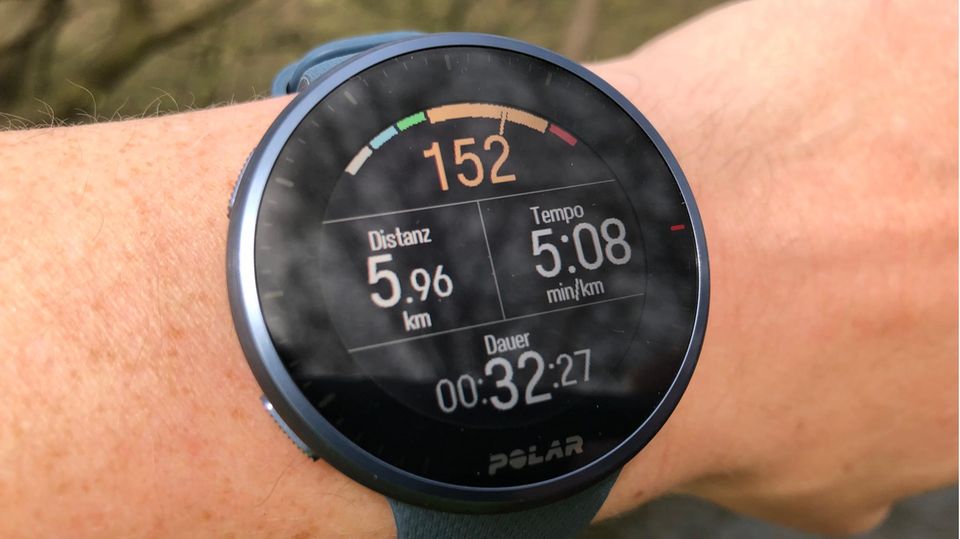Running shoes on – and out!
Start jogging: Smart tips for beginners and 3 mistakes to avoid
More than five million Germans regularly lace up their running shoes. Another 17 million jog at least occasionally.
© Drazen_ / Getty Images
Do you want to start jogging? Congratulations – that’s a very good idea. Read here the most important tips for beginners before the first training session – and which mistakes you should absolutely avoid.
More than five million Germans regularly lace theirs running shoes and go jogging. After all, 17 million state that they go jogging at least occasionally. Nevertheless: Germany has become lazier. The running boom has a dent. You want to steer against it? That is a very good idea. We’re happy to help and give you a little help when you start your running training.
Many novice runners are afraid of making mistakes. Hardly anything is as uncomplicated and easy to learn as jogging. Solid shoes, comfortable sportswear and a pinch of motivation – that’s all it takes to cut a fine figure and be fitter through everyday life within a few months. Read here what is important when starting to enjoy running and what mistakes you should avoid when jogging.
- Why should I jog at all?
- Before it begins…
- Gear – What to look out for
- The 3 most common (beginner) mistakes
Every beginning is difficult – even when jogging
The question why you should jog is something you (unfortunately) have to answer yourself. What can help is a piece of paper on which you write down your very personal reason. Want to shed a few pounds of winter fat? Manage the six flights of stairs to the apartment without pumping at the door like a may beetle? Or finally show your son who’s boss in the ring on a Sunday walk? Maybe you even dream of starting at a regional running event with friends or colleagues? Write it down! If you don’t feel like jogging at all – and this is guaranteed to happen more often in the first few weeks – grab the motivational note.
Now there are people – the author of this text is one of them – who find it difficult to motivate themselves with a corresponding reminder without a concrete goal. For jogging rookies, it doesn’t have to be a competition. For starters, concretely formulated goals such as “jog ten kilometers at a time in three months” are sufficient.
Start jogging: pay attention to this before you start
There is no sport that is as uncomplicated and easy to learn as jogging. All you need are two healthy legs, a healthy heart, a appropriate running shirtone running pants and a few running shoes.
Speaking of healthy. Before you lace up your shoes and go jogging regularly, you should have a thorough check-up by a doctor – even if you feel generally fit. In the so-called sports medical examination, the heart, circulation and musculoskeletal system are checked. And best of all: With many statutory health insurance companies, the sports medical examination is a statutory service – accordingly, the costs for this are borne entirely or at least partially by the health insurance companies. Once the doctor has switched the jogging traffic light to green, you can start. Expensive investments are not required. With one exception.
Running shoes – don’t save at the wrong end
The right and, above all, suitable footwear is the be-all and end-all when jogging. Leave the worn-out sports shoes on the shelf – that would be saving at the wrong end. Rather, it is worth looking for the right pair in a sports shop running shoes to search. Many stores offer professional advice using treadmill analysis. Specialist salespeople recognize misalignments of the leg axis (eg knock knees or bowlegs), but also special features when putting down the foot and then recommend the appropriate running shoes.
Beginners should cost about 100 euros for a pair running shoes plan on. As far as the rest is concerned, a simple sports shirt, jogging pants and a thin cap should protect your head on colder days – because that’s where the body loses most of its heat. No matter what you choose, you should feel comfortable in it. The rule of thumb is: look at the outside thermometer and dress as if it were three degrees warmer outside. It’s okay if you shiver a little in the first few minutes.
Start jogging: In your shoes, ready, GO!
The preparations are complete. Ready to go. But despite all the euphoria: take it easy! Otherwise the wave of euphoria will collapse over you as quickly as it has built up. You should start with a change of running and walking phases so that the circulation can gradually get used to the new load. “Initially, no more than three times a week – and as slowly as possible,” says Dr. Matthias Marquardt, sports doctor and author of “running bible”the standard work for beginners as well as experienced runners.
First of all, the duration of the stress and corresponding rest periods are important. Completely irrelevant: the running speed. So don’t let yourself be distracted by high-spirited or more powerful joggers who overtake you with a red face and panting. Give your body time – your patience will pay off.
Jogging for beginners: The first training
- Duration: about 40 minutes
- Goal: Gently introduce the muscles, cardiovascular system, tendons and joints to endurance stress
- Method: Running and walking alternately
- Process: 3 minutes easy jog + 2 minutes walk break + 3 minutes easy jog + 2 minutes walk break; repeat this four times
Now some beginner runners rightly ask themselves how they should find out that the pace in the running phases is not too high. There is also a rule of thumb for this: If you have a training partner, which increases the fun and entertainment factor when jogging, you should be able to talk to each other during the training without any problems. Remember this principle. Your muscles in particular will thank you.
Start jogging: the three most common mistakes
- Beginners train often too fast, too much and too intense. They overload the musculoskeletal system. This can lead to Achilles tendon and knee problems.
- Beginners are often over-motivated. This means that they can jog often want and the Forget rest periods. Tip: Each training day should be followed by a rest day. There is no running on rest days. Alternative sports such as swimming or cycling are permitted. Important to know: Rest phases and regeneration are the key to the so-called training effect. Because only in the recovery phase does the body have time to repair the damage caused during the stress and to allow adjustments.
- Beginner runners tend to become permanent with other joggers to compare. This is not only unsettling – it is also demotivating, because the other runners usually have more experience and are therefore naturally more capable than rookies. Beginners should therefore concentrate on themselves and measure themselves against their own progress. Being inspired by the “old hands” is of course not forbidden. On the contrary: Experienced runners are usually happy to be able to pass on their knowledge to beginners.
You might also be interested in:
Sources:“fit for fun”; “Runner’s World”; “GEO”; extra; “bevegt.de”
This article contains so-called affiliate links. Further information are available here.




